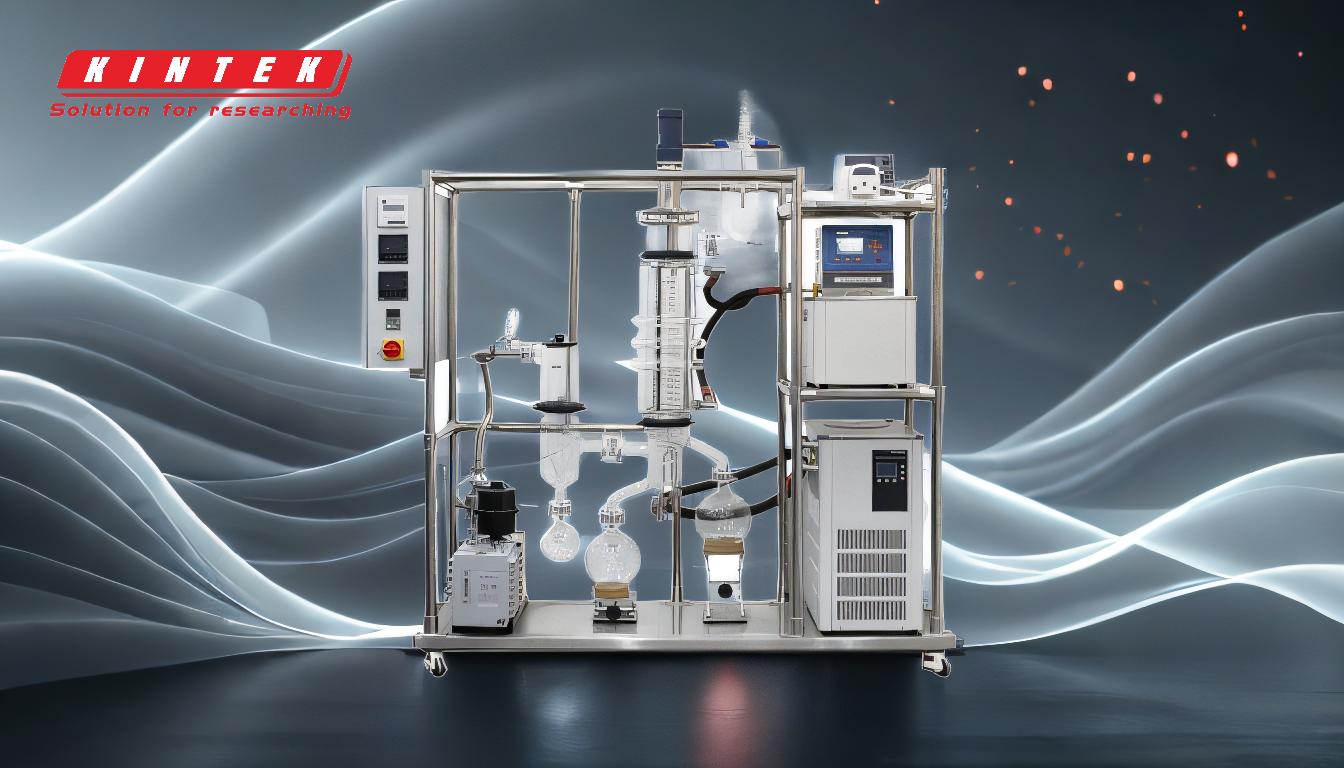Distillation is a versatile separation technique that is not limited to separating gases from solids. It is widely used across various industries for purifying liquids, separating mixtures of liquids, and even extracting specific components from complex mixtures. From producing distilled water and alcoholic beverages to purifying chemicals and separating air into its components, distillation plays a crucial role in many processes. Its applications extend to food, pharmaceuticals, energy, and industrial manufacturing, making it a fundamental method for achieving high-purity products and efficient separation of components.
Key Points Explained:

-
Definition and Principle of Distillation:
- Distillation is a process that separates components of a mixture based on differences in their boiling points. It involves heating a liquid mixture to create vapor, which is then condensed back into a liquid form.
- This method is effective for separating liquids from liquids, liquids from dissolved solids, and gases from liquids, but it is not typically used for separating gases from solids directly.
-
Applications of Distillation:
- Water Purification: Distillation is used to produce distilled water, which is essential for applications like lead-acid batteries and humidifiers. It is also employed in desalination to convert seawater into drinking water.
- Alcoholic Beverages: Fermented products, such as spirits, are purified and concentrated using distillation to achieve the desired alcohol content and flavor profile.
- Perfumes and Flavorings: Essential oils and aromatic compounds are extracted from herbs and plants through distillation, creating ingredients for perfumes and food flavorings.
- Oil Stabilization: In the petroleum industry, distillation is used to reduce the vapor pressure of crude oil, making it safer for storage and transportation.
- Air Separation: Cryogenic distillation separates air into its primary components—nitrogen, oxygen, and argon—for industrial and medical uses.
- Chemical Synthesis: On an industrial scale, distillation purifies liquid products obtained from chemical reactions, ensuring high-quality outputs.
-
Limitations of Distillation:
- While distillation is highly effective for separating liquids and gases, it is not typically used for separating gases from solids. Solids generally do not vaporize under the conditions used in distillation, making other separation methods (e.g., filtration or sublimation) more suitable for such tasks.
- Distillation requires significant energy input, especially for large-scale operations, which can be a limitation in terms of cost and environmental impact.
-
Why Distillation is Not Primarily Used for Gas-Solid Separation:
- Distillation relies on the vaporization of components, which is not feasible for most solids. Solids either decompose or remain in their solid state at the temperatures used in distillation.
- Alternative methods, such as filtration, centrifugation, or sublimation, are more effective for separating gases from solids.
-
Conclusion:
- Distillation is a highly versatile and widely used separation technique, but its applications are primarily focused on liquid-liquid, liquid-gas, and liquid-solid separations. It is not designed or commonly used for separating gases from solids, as other methods are better suited for this purpose. Understanding the specific capabilities and limitations of distillation helps in selecting the appropriate separation technique for a given application.
Summary Table:
| Aspect | Details |
|---|---|
| Definition | Separation based on boiling points, involving vaporization and condensation. |
| Applications | Water purification, alcoholic beverages, perfumes, oil stabilization, etc. |
| Limitations | Not suitable for gas-solid separation; high energy consumption. |
| Alternative Methods | Filtration, centrifugation, sublimation for gas-solid separation. |
Learn more about distillation and its applications—contact our experts today!









